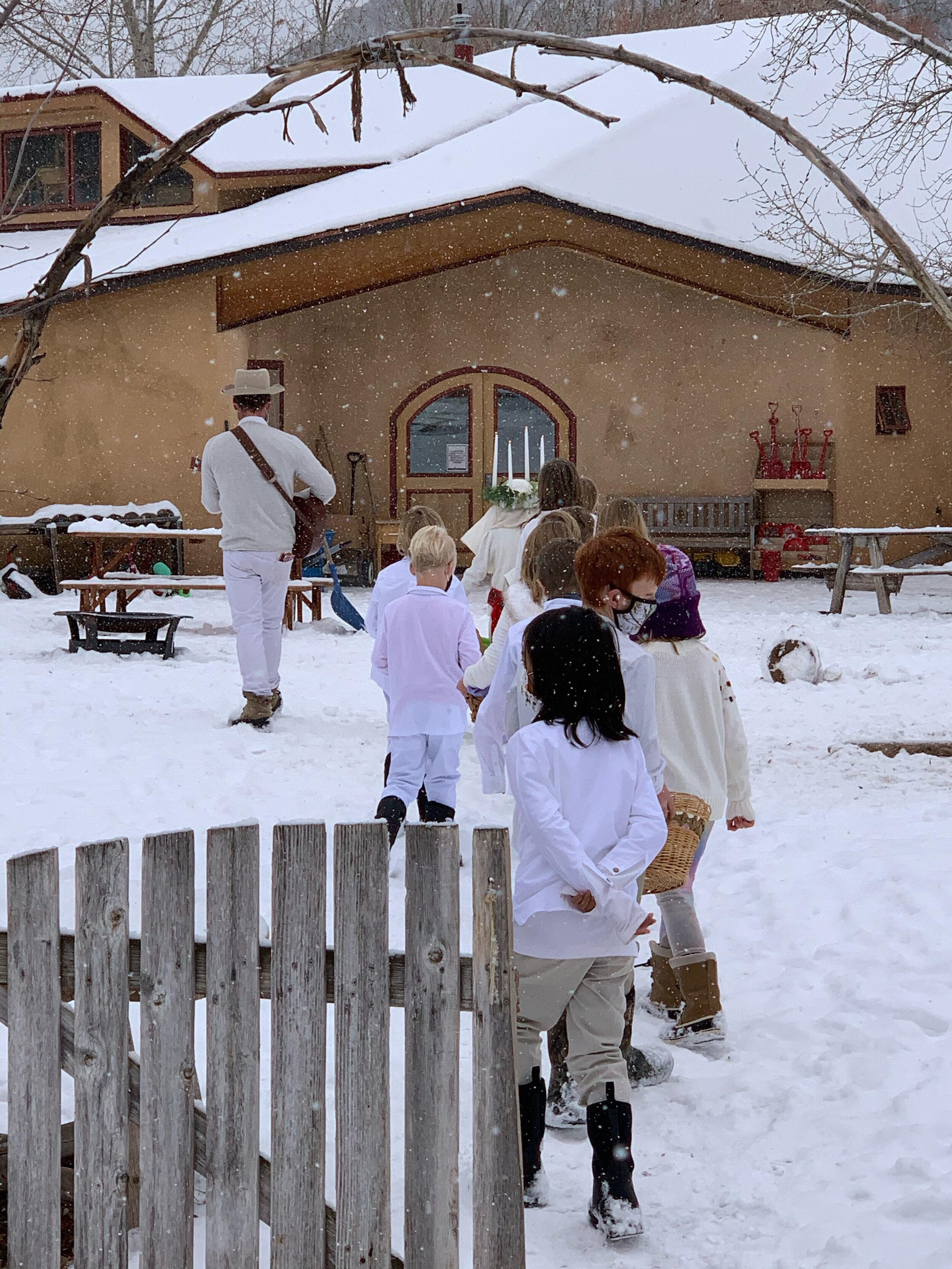Santa Lucia Day: Festivals and the Role They Play
What is the role of festivals in Waldorf Education?
These yearly traditions are invaluable grounding elements that arise year after year. They serve as opportunities for collective reflection, intention and engagement with ideas fundamental to our human connection. For example, the Advent Spiral which is currently taking place in our main hall, is a chance to consider what the year has held thus far and the intention, wrapped in light, that we wish to carry into the winter months and year ahead. It takes shape as a physical spiral which each student walks, carrying a candle that is lit in the middle and placed around the edge of the spiral. When the spiral is complete, the candles of the entire class glow together and illuminate a collective engagement in a way that must be experienced to truly grasp its impact.
These yearly traditions are often described as “magical” by alumni and settle into the human being as repetitive opportunities to consider themselves and the community around them. Laying a foundation for healthy reflection, engagement and community consideration.
What is Santa Lucia Day?
This festival of light (one of many across cultures) is named for Santa Lucia is celebrated on her birthday, December 13 (or closest school day). Lucia, whose name means "light," lived in the fourth century in Sicily and her birthday is honored in Sicily with a seasonal celebration. The celebration also became a traditional one in Sweden beginning in the eighteenth century, and this is the one we celebrate at our school.
In this ceremony, the youngest girl from the family is chosen to be Lucia. She rises before dawn and prepares luciakatter (literally, lucia cats), which are rolls seasoned with saffron and cardamon. Then, dressed in a white robe with a red sash, wearing a wreath of candles on her head, Lucia leads a procession of people, some maids of honor, others star boys, to bring rolls and coffee to the neighboring families.
It is our school tradition for the 2nd grade to prepare the luciakatter, dress in white robes, and bring bread to the other classes during main lesson, led by Lucia, either the oldest girl in the class, or a rotation of students throughout the morning. The class sings Santa Lucia, which begins, "Now in the winter night, good folk are waiting, see now the maid of light, darkness abating."
Our 2nd graders could be found moving through campus this morning on a magical snowy day!
What Festivals do we celebrate?
While there are a collection of festivals typically celebrated annually, our curriculum is designed to include a wide variety of celebrations from around the world and to continually adapt and grow. Teachers typically work closely with their individual classes to include all relevant holidays and celebrations in their curriculum, depending on the students within each class. This helps us ensure a diverse range of cultures and traditions are reflected in our curriculum and that families feel moments of celebration and gathering within their culture are represented within our community. Festivals and traditions are typically brought to life through stories, songs, verses and traditional activities, thus the study of our students comes alive, fostering a global consciousness and respect for our unique human traditions.
To learn more about the adaptive nature of the curriculum and to discuss cultural traditions you’d like to see reflected within your child’s classroom, please do not hesitate to reach out to our administration or individual class teachers, all of whom will be happy to engage in this conversation in depth.



